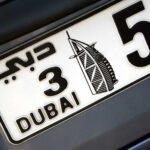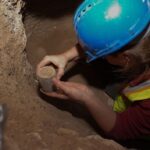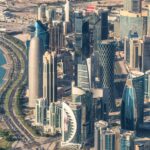The programme is part of the Dubai 2040 Master Plan’s goal to develop and expand the emirate’s public beaches by 400%.
The master plan and designs for the Jebel Ali Beach Development Project, the plan to develop the longest open public beach in Dubai, has been approved, announced Sheikh Hamdan bin Mohammed Al Maktoum, Crown Prince of Dubai, on Sunday.
Upon completion, the Jebel Ali Beach Development Project will see a two-kilometre open beach for swimming, a 2.5km diving sports area, a walkway with viewing platforms, and recreational and service areas for beachgoers of all ages.
With a length of 6.6 kilometres, Jebel Ali beach will cover a total area of 330 hectares.
The beach will also be connected with integrated infrastructure, including a two-lane road in each direction, parking for 1,000 vehicles, 80 bicycle racks, a cycling track, and a 5 km running track.
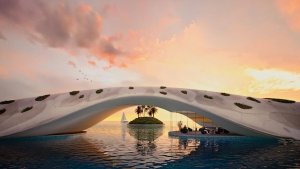
In a statement, Sheikh Hamdan stated: “The Jebel Ali Beach Development Project is part of a broader master plan to develop public beaches in the emirate aimed at increasing the total length of beaches by 400%. This involves adding new public beaches, enhancing existing ones, and equipping them with new recreational, sports, aesthetic, and investment facilities as envisioned in the Dubai 2040 Urban Master Plan.”
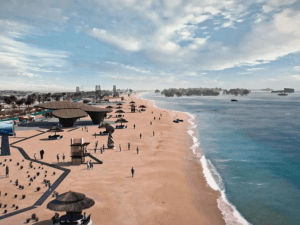
Sheikh Hamdan added that the government is “determined to implement the infrastructure and services, and provide multiple urban options for citizens, residents, and visitors, including beaches, open spaces, and recreational green spaces, to enhance the quality of life in the city, and for Dubai to be the best city to live in the world, providing a distinguished healthy environment for residents and visitors.”
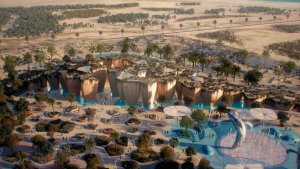
According to Mattar Al Tayer, Commissioner General for Infrastructure, Urban Planning, and Well-Being Pillar, the plan will include a 5 km sandy beach to be developed by Nakheel and a 1.6 km mangrove beach to be developed by Dubai Municipality.
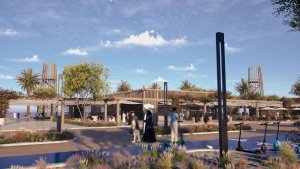
“The area features a unique ecosystem due to the presence of mangrove trees, which enhances the sanctuary and provides habitats for many living organisms. The design of the area allows for optimal site utilisation, enabling the preservation of the ecosystem and enrichment of the visitor experience,” Al Tayer noted.
Three Locations
The beach will have three separate locations. The first location, the ‘Pearl’, is situated on the right side near the entrance of Palm Jebel Ali. This location will be the main centre for beach and recreational activities with options for a lively family beach, sports activities, a swimming pool, and kids’ play areas. ‘The Pearl’ will also have a beach club with a pool and private beach for a fee, several restaurants, cafes, shops, and a floating restaurant.
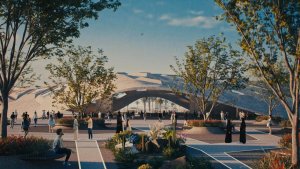
The second site, named the ‘Sanctuary,’ is a haven for turtles. This area places the highest priority on environmental conservation while housing recreational and sports activities at the same time.
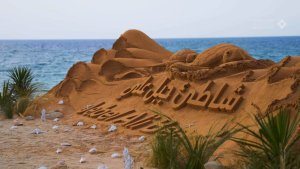
The ‘Nest’ is the third location that offers a recreational, educational destination featuring a mix of educational initiatives and environmental conservation. The Nest, situated within the mangrove area, is also an environmental centre for studies and awareness of biodiversity, turtle rehabilitation, and care programmes.
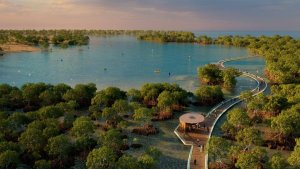
Other Projects
A floating bridge will link the two sides of Al Mamzar Beach, it was announced on June 3. The 200-metre pedestrian bridge will be the first of its kind in Dubai. A floating bridge is built right over the water surface, allowing visitors to venture deep over a water body without getting wet.
This came as the urban planning committee in Dubai awarded contracts to develop two of its most popular stretches of beaches: Al Mamzar and Jumeirah 1. The public beaches will remain partially closed as they are developed. The parts that are open will see safety measures implemented to protect users.
Last year, Dubai had announced an ambitious project to expand its coastline by 400 per cent, with residents and tourists getting to explore 105km of public beaches — up from the current 21km.
Dubai has eight public beaches: Khor Al Mamzar, Al Mamzar Corniche, Jumeirah 1, Jumeirah 2, Jumeirah 3, Umm Suqeim 1, Umm Suqeim 2, and Jebel Ali. In 2023, some of these beaches were revamped.


